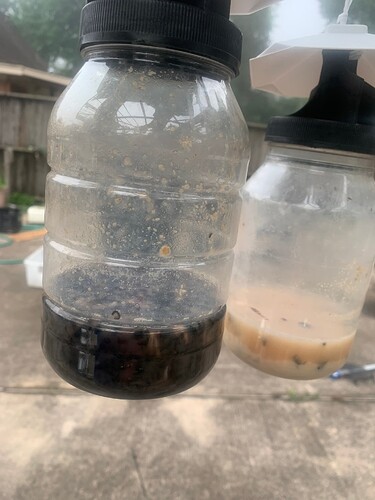It works on: mosquitoes, flies, fruit flies, butterflies, wasps, bees, lovebugs . . . . and others.
INTRODUCTION:
In the ball room and under a rotating disco ball guests find themselves being chased around by little light dots. If those dot are portraited ed as “living” Things the insects will shine if not run away from the areas.
The method animate the disco ball effect by mounting a LED strip on a round circle band and animate its light to running around and around, forward and reverse to have its light reaching the insects head first or tail first.
To portrait a light as a “living thing” we have its color continuously change for passive objects have steady color. During the research of “Mosquito control; an optical method” we tested and find it's effective within the range of 60 to 500hz translate to the the timing range ofrom0.5 to 8.33 ms a color to stay on before changing to he next.
Equipment:
Beside Arduino you need a high density individually addressable light strip such as AMAZON
type or paste code here
#include <FastLED.h>
// How many leds in your strip?
#define NUM_LEDS 144
// For led chips like WS2812, which have a data line, ground, and power, you just
// need to define DATA_PIN. For led chipsets that are SPI based (four wires - data, clock,
// ground, and power), like the LPD8806 define both DATA_PIN and CLOCK_PIN
// Clock pin only needed for SPI based chipsets when not using hardware SPI
#define DATA_PIN 11
CRGB leds[NUM_LEDS+1];
#define CLOCK_PIN 13
char flags[150];
void setup() {
FastLED.addLeds<NEOPIXEL, DATA_PIN>(leds, NUM_LEDS); // GRB ordering is assumed
int x,y;
for(y=0;x<150;x++)
{
if(x%6<4) flags[x]=255; else flags[x]=0;
}
for(x=0;x<144;x++){ if(x%6 <4)leds[x] = CRGB::Red; else leds[x] = CRGB::Black;}FastLED.show(); delay(2000);
for(x=0;x<144;x++){ if(x%6<4)leds[x] = CRGB::Green; else leds[x] = CRGB::Black;}FastLED.show(); delay(2000);
for(x=0;x<144;x++){ if(x%6<4)leds[x] = CRGB::Blue; else leds[x] = CRGB::Black;} FastLED.show(); delay(2000);
}
void loop() {
// Turn the LED on, then pause
int frame, offset;
int x,y, packet;
int cycle_per_frame, cycle_count;
cycle_per_frame=13;
frame = offset =0;
cycle_count=0;
char*zz;
while(1)
{
//SET RED Then OFF at 500 hx;
y=offset;
for(x=0, y=offset;x<144;x++,y++)leds[x].r = flags[y]; FastLED.show(); // it takes 4.25 ms to finish lighting all 144 LED
for(x=0, y=offset;x<144;x++,y++) leds[x].g = flags[y];FastLED.show();
for(x=0, y=offset;x<144;x++,y++) leds[x].b = flags[y];FastLED.show();
cycle_count++;
if(cycle_count== cycle_per_frame) {cycle_count=0; frame++;} // one step 1 step turing around
offset= frame %6;
if((frame /48) &1) offset=5-offset; // change direction every 1/4 round
}
}
My experimental setting for outdoor in the backyard and front yard as control
Using fly magnet fly AMAZON'S traps at front yard and backyard. The picture shows R,G,B but our brain mic them up to appear as 'white' to human's eyes.
And the result after 2 weeks The trap in frontward (control) contains carcasses of thousands of flies and only few in the backyard where ight was installed.

